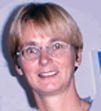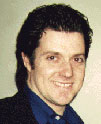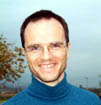Secretary General of the International
Forum for Accessible Science (IFAS), an educational Human Rights
organisation in the field of science and health.
He is Acting Editor of Continuum Magazine.

|
Secretary General of the International
Forum for Accessible Science (IFAS), an educational Human Rights
organisation in the field of science and health. |
 |
||||||
|
Of
Mice And Men; Viral Etiology Of Human Cancer:
A historical perspective Etienne de Harven, MD, Professor (Emeritus) of Pathology, University of Toronto, Canada. |
|||||
|
Etienne deHarven worked in electron
microscopy (EM) primarily on the ultra-structure of retroviruses throughout
his professional career of 25 years at the Sloan Kettering Institute
in New York and 13 years at the University of Toronto. In
1959 he was the first to report on the EM of the Friend virus in murine
(mouse) leukaemia, and in 1960 to coin the word "budding” to
describe steps of virus assembly on cell surfaces. He is a member of the
Scientific Advisory Board of IFAS and the Presidential
AIDS Advisory Panel of South Africa. |
 |
||||
|
|
|||||
|
AIDS,
Hepatitis C, BSE:
Infectious or Intoxication Diseases? Claus Köhnlein, Germany English translation and English edit by Jürgen Faas, Kathy McMahon and Fintan Dunne. With kind permission by the author. |
|||||
|
Claus
Köhnlein, is a clinical oncologist and
clinician with AIDS-practice in Kiel, Germany, clinical Advisor to
IFAS
and member of the
Presidential AIDS Advisory Panel of
South Africa |
|||||
|
Christine
Johnson is a member of MENSA and a freelance science journalist
from Los Angeles, USA. She is the Contact person of HEAL/Los
Angeles, is on the Board of Advisors of
Continuum magazine and copy-editor of Reappraising
AIDS. She has an extensive background in medicine, law and library
research and is motivated by a desire to find out the truth about ‘AIDS’.
She has a special interest in making the information in technical science
journals accessible to the public. Over the past four years she has followed
the work of the Perth group and written articles critical of the HIV antibody
tests, including an extensive interview with Eleni Papadopulos-Eleopulos,
which have been published world-wide. |
 |
|||||
|
Mere
Smoke Of Opinion; |
||||||
|
Professor Michael Tracey is Director
of the Centre for Mass Media Research at the
University of Colorado at Boulder. From 1980 to 1988 he has been
head of the Broadcasting research Unit in London. From 1994
to 1995 he was visiting Professor and Chair of International Communication
at the University of Salford, England. |
 |
|||||
|
How
To Interpret Diagnostic Test Results;
an evidence based medicine approach Klazien Matter-Walstra, Switzerland |
|||||||
|
Klazien Matter-Walstra studied human
biology at the University of Groningen, Holland. Thereafter she came to
Bern, Switzerland for her PhD. After a 7 year period work at the Institute
of Pathology in Bern, where she introduced and managed a laboratory for
immunocytochemical cancer diagnosis for exfoliative cytology. She became
involved in evidence based medicine and epidemiology and changed jobs.
At the moment she works for the company Mediscope where she is responsible
for medical literature monitoring, teaching evidence based medicine and
writing critical appraisals on medical publications. Her own homepage
with more information and a full c.v. can be found at http://home.tiscalinet.ch/kmatter |
 |
||||||
|
To what extent are we as individuals allowed to make use of our freedoms of thought and choice in our own affairs once we have been labelled with a medical diagnosis? These and other important questions relating to human rights in the scientific and medical fields will be addressed on a regular basis in each issue of Continuum Magazine. Knowledge is the best weapon. We aim to help with critical information on such crucial issues as diagnoses (labels) and treatments. But also we seek to inform readers about their rights as patients - how and where to claim ones rights when we find them violated. |
|||||
|
Making
Waves, Changing Tides;
The story of Joint Action Council Kannur (JACK), India Anju Singh, New Delhi, India |
|||||||
|
"Never
doubt that a small group of thoughtful, committed people can change the
world. Indeed it is the only thing that ever has!” |
 |
||||||
|
Alistair McConnachie has a degree in
Agricultural Economics. He is a farmer and freelance journalist and has
organises public meetings and written extensively against the present
slaughter policy for Foot and Mouth Disease. In May 2001, Alistair McConnachie
was involved in the successful defence of Mossburn Animal Centre, outside
Lockerbie, South of Scotland. This incident ended the compulsory contiguous
cull in Scotland. |
 |
||||||
|
Modern
Medicine: A Neo-Christian Religion;
the hidden influence of beliefs and fears Olivier Clerc, France |
|||||||
|
Olivier Clerc is a Swiss Journalist,
living in France. He has been working in the field of personal development,
heath and spirituality for the past twenty (20) years, as an author, translator,
journalist and publisher. He is the author of four (4) books. |
 |
||||||